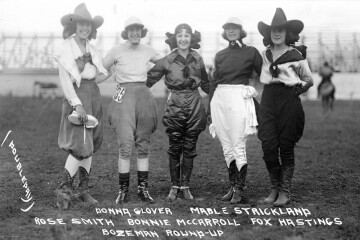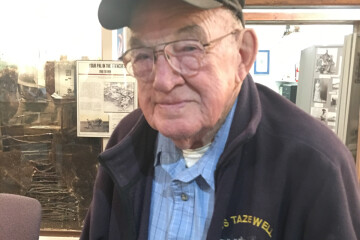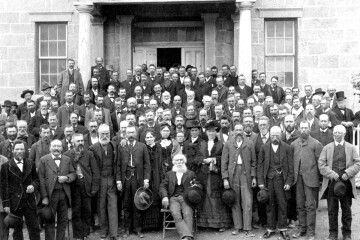Multitudes of Enthusiasm Celebrating a Gallatin Valley Christmas
As the daylight begins to dim, citizens of Gallatin Valley can be found flowing in and out of auditoriums with their jackets pulled up about their ears; long woolen ones, silken-soft puffy ones, those newly purchased and those that have seen many Montana winters. ‘Tis the season of the annual Christmas programs, long a staple in this community like so many others across the nation. From the large-scale production of the Nutcracker to the smaller local school programs, generations of Montanans have braved the cold to gather together to witness culture at many varying levels.
The Gallatin History Museum has a collection of oral histories taken during the Montana Bicentennial Project of the 1970s. Many of these reminiscences mention with fondness the annual Christmas program. As noted by Mrs. Jake Mast, “the Christmas program (of the early 1900s) was a great great big one, and it really was beautiful.” She goes on to say, “There was a little rivalry between the schools...each teacher trying to put on the best program...every child in the [Bridger] canyon who could even talk was part of the Christmas program.” Coming from a one-room school house in Cooke City, I too remember the tiny building being packed with locals who came to see sometimes only five little faces putting on an hour-long extravaganza.
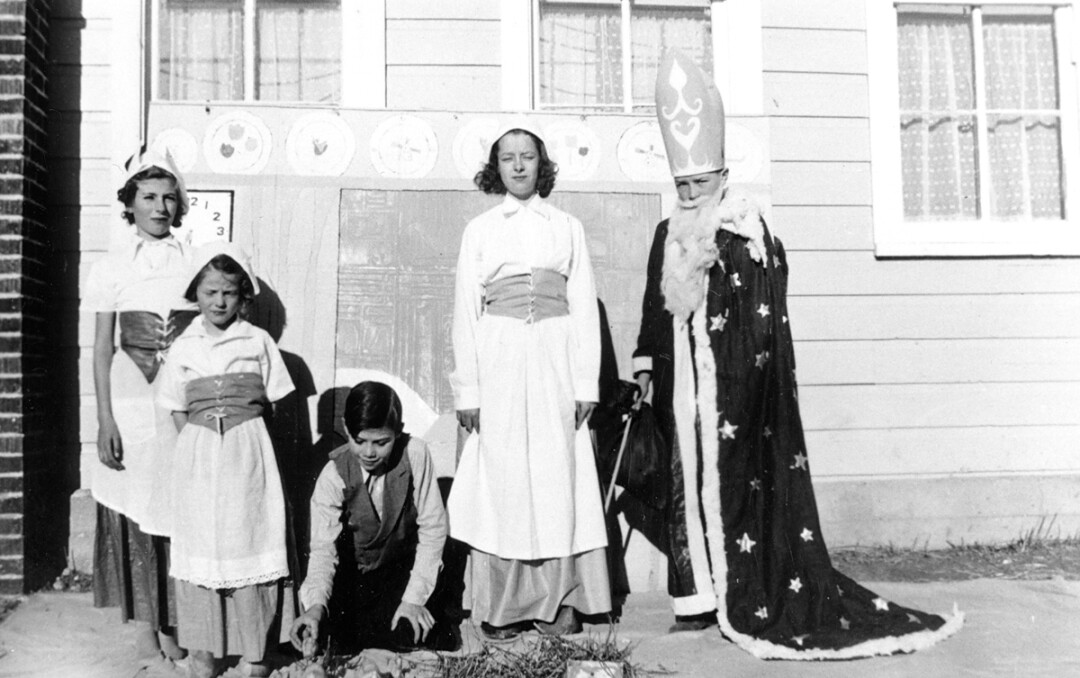
With varying degrees of talent but multitudes of enthusiasm, these small school programs have had their moments - sometimes funny, but always endearing. Mabel Fuller, who moved to West Yellowstone to teach in the 1920s, remembered her first program as a teacher:
The first year that I taught here in town we couldn’t buy things to fix up the costumes like they do nowadays. I had some tissue paper but we didn’t have enough to cover the back of the angel’s wings and we had made the wings out of old boxes of tobacco... Well one little girl was very full of life and we had the little angels standing in a batch in the back and the nativity scene. I had to play for them, we didn’t have anyone who could play the piano, and I heard everybody laughing in the middle of the nativity scene and I couldn’t imagine what was the matter because it wasn’t supposed to be funny. After it was over, one of the boys told me that this little girl had turned around on the bench so they could see the back of their wings and it said Pills tobacco and they thought it was kind of funny that the angels in heaven would use Pills Tobacco I guess. She did, she thought it was cute. But everybody that was attending the program, they got a kick out of it. 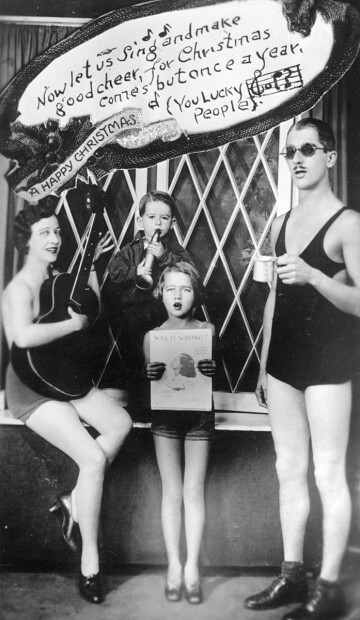
Making do with what one had during those early years in the Valley also struck a chord with many of the interviewees of the Bicentennial Project. Nora Weaver, an early resident of Gallatin Valley, remembered that she and her sister “never had any toys, hardly, we got one doll a piece, we got for Christmas, and the rest of the time we just made a play house out of rocks and separated our rooms and then we’d just take old, broken pieces of glass for furniture.” Don Anderson, born in 1900 near Bozeman, recalled his sister mentioning that for Christmas during the Depression of the 1890s, “each child got a family gift of an apple or an orange – not both, understand. They had to take their choice.” When his sister “turned up her nose at her orange,” their father “eagerly took it, because he hadn’t had any fresh fruit for a long time.” Early Chestnut resident, George Stublar, also noted that “the trees were decorated” but that locals did not “necessarily exchange presents because people were rather poor. You were lucky to get your own presents.” There was also the infamous Christmas party of 1874, when the few women who lived in the Valley threw a party for the Bachelors in the area. It was noted that “entrée on the part of the men would depend upon a ‘boiled shirt’.” The men put their funds together to give “a present for every child” while the women spent time making ornaments to decorate the tree. The party was simple and yet grand for those early years!
While many decorated their homes with handmade ornaments, one could always count on Downtown Bozeman for the true Holiday decorative experience. Since the 1960s, Main Street has been graced with the giant colored decorations that hang over each intersection. But before these decorations (sometimes affectionately called “spiders”) arrived, many locals can remember seeing a toy carousel in the window of Angionette’s shop at Christmastime. Angionette’s was one of Montana’s finest ladies clothing shops, located at 5 East main Street in Bozeman. The shop was owned and operated from 1962-1991 by Angionette and Harold Warfield. After Harold died in 1991, Angionette continued in business until 1993. The carousel features 20 white horses that would revolve around a teal, gold and red ornately decorated frame with a red velvet top. It is now housed at the Gallatin History Museum, where visitors can delight in it with childlike wonder. 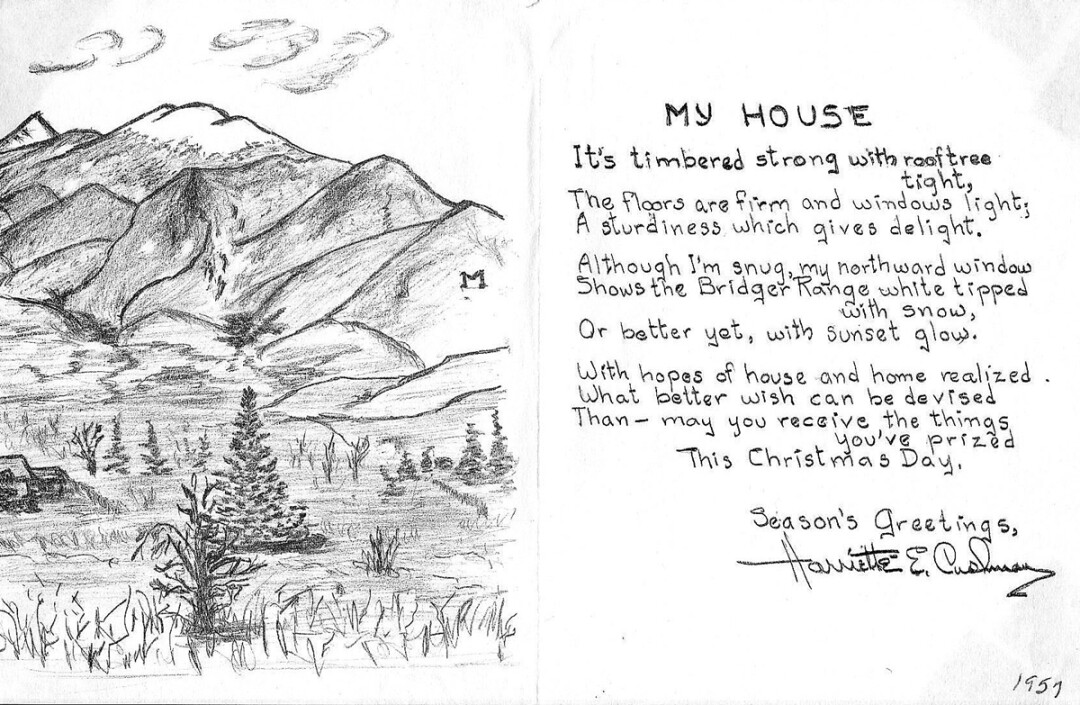
Another method of sharing in the spirit of the season is the distribution of Christmas cards. This included the annual Byron Story Family cards, which humorously depict the clan in unique costuming. One such card shows the foursome clad in skimpy bathing attire and dress shoes and is captioned: “Now let us sing and make good cheer, for Christmas comes but once a year (you lucky people).” Another shows the family dressed in their 1800s finest celebrating an “Old Fashioned Christmas.” There was also the vast collection of cards sent out every year by Harriet Cushman. Harriet was, among many things, a poultry scientist, photographer, artist and poet. Over 500 people received copies of her handmade Christmas card annually; each typically featuring a small drawing and a poem.
It is these traditions that have brought residents of the Valley together for generations. Early pioneers depended upon the ability of others in the community to entertain, like in those early school plays of yesteryear that still resonate with families today. There is something about the long winter months that makes one want to put on their winter jacket, brave the cold, and gather to experience entertainment in the real life - person to person.

